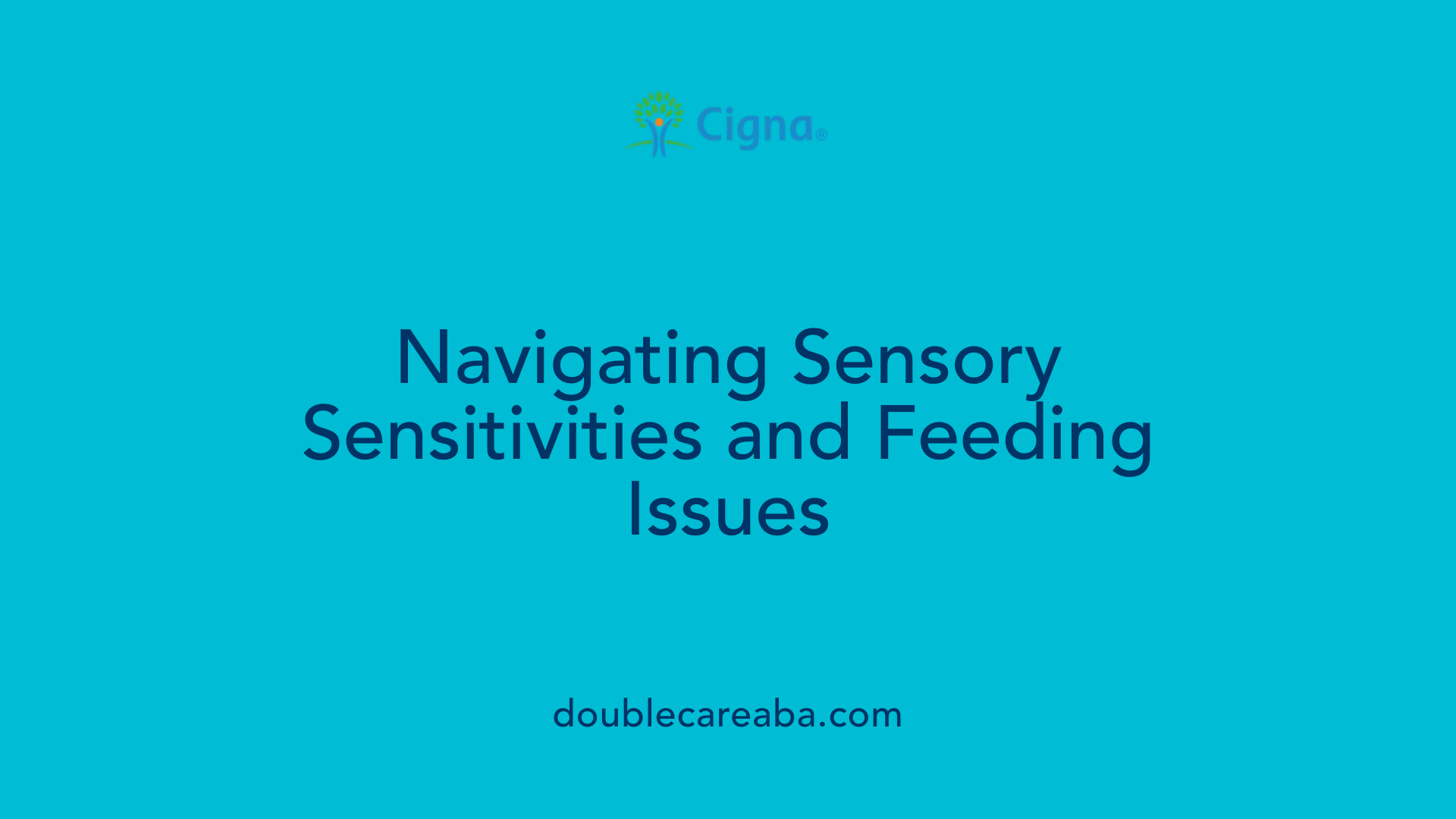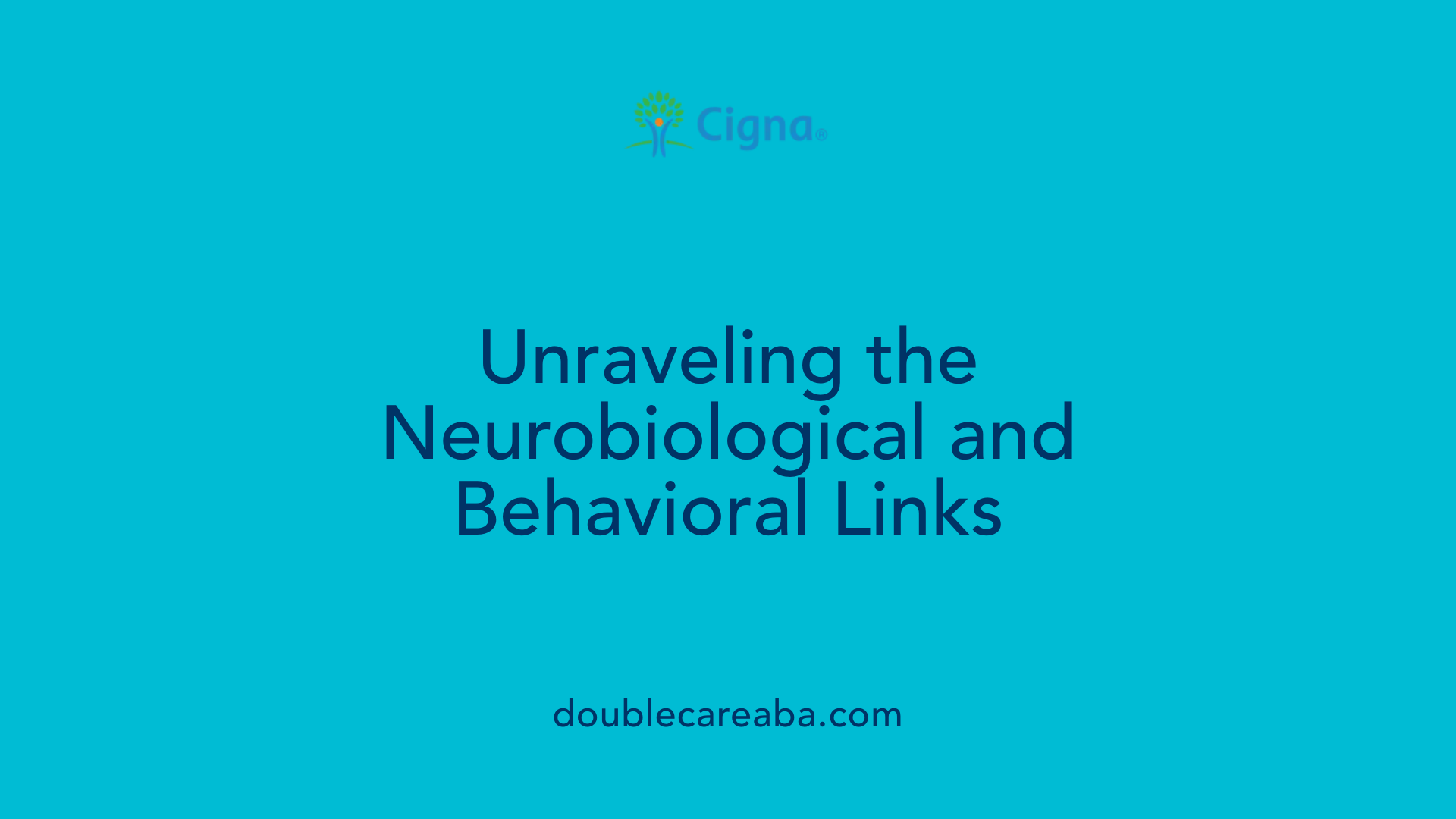Understanding the Intersection of Autism and Disordered Eating Behaviors
Autism spectrum disorder (ASD) and eating disorders are complex conditions that often co-occur, influencing each other's development, manifestation, and treatment. Recent studies and clinical observations have highlighted the high prevalence of eating disorders among autistic individuals, emphasizing the need for tailored approaches in assessment and intervention. This article explores the types of eating disorders associated with autism, underlying causes, unique symptoms, and effective support strategies, aiming to deepen understanding and improve outcomes for affected individuals.
What is the eating disorder associated with autism?
What is the eating disorder associated with autism?
Autism is linked to a higher incidence of specific eating disorders, primarily avoidant/restrictive food intake disorder (ARFID) and anorexia nervosa. These conditions often co-occur with autism, driven by characteristic sensory sensitivities and behavioral patterns.
Many autistic individuals display unusual eating behaviors, such as strong reactions to food textures, smells, and tastes. These sensitivities can lead to selective eating, food aversions, or refusal to eat certain food groups, which may result in nutritional deficiencies or significant weight loss—even in the absence of concerns about body image.
ARFID, a condition characterized by persistent avoidance or restriction of food intake that is not motivated by weight or shape concerns, is particularly prevalent among autistic populations. It often stems from sensory sensitivities or anxiety related to eating, and can be difficult to treat due to the underlying sensory and behavioral challenges.
Autistic individuals with anorexia nervosa may restrict food intake to manage anxiety or sensory overload rather than for weight control. Their eating behaviors can be influenced by rigid routines or obsessive interests, which exacerbate their disorder.
Treatment difficulties often arise because standard approaches to eating disorders may not meet the unique needs of autistic patients. Without adaptations, therapies can be less effective, leading to poorer outcomes. Tailoring support to recognize sensory sensitivities and behavioral patterns improves the chances of successful intervention.
In summary, the most common eating disorder associated with autism is ARFID, but individuals on the spectrum can also experience other eating disorders such as anorexia nervosa. Recognizing these links is crucial for effective diagnosis, treatment, and support for autistic individuals facing these challenges.
Distinct feeding problems and sensory sensitivities in autism

What types of feeding problems are associated with autism?
Feeding issues in autistic individuals commonly include food selectivity and intense food aversions. Many autistic people exhibit restricted and repetitive eating behaviors, often sticking to a limited set of preferred foods.
These challenges are closely connected to sensory sensitivities related to textures, smells, and tastes. For instance, hypersensitivity to textures such as slimy, gritty, or sticky foods can lead to rejection of fruits, vegetables, or other foods with specific textures.
Autistic individuals often develop narrow food preferences. Commonly, they favor simple, familiar foods like grains, chicken nuggets, or crackers, and resist trying new or unfamiliar foods. This resistance can make nutritional balance difficult to achieve.
Behavioral issues at mealtimes also frequently occur. During meals, sensory overload may lead to tantrums, crying, or attempts to leave the table. These behaviors are often triggered by discomfort with sensory stimuli, routine disruptions, or changes to the environment.
How do sensory sensitivities affect eating behaviors?
Sensory sensitivities play a central role in feeding problems in autism. Preferences or aversions are often based on sensory input, such as textures, temperatures, smells, or tastes.
For example, some autistic people may only eat foods with a certain texture, like crispy or soft foods, avoiding anything that is slimy or chewy. Others might reject foods with strong odors or flavors.
These sensory differences can also cause sensory overload, where excessive sensory input leads to distress and refusal to eat. Routines around eating are often vital for managing comfort and predictability.
Patterns of narrow food preferences and resistance to trying new foods
Many autistic individuals develop highly rigid eating patterns, often characterized by a refusal to try new foods. This inflexibility stems from the need for sameness and predictability, core features in autism.
This narrow range of accepted foods can lead to nutritional deficiencies and complicate health management. Picky eating behaviors often persist through childhood and into adulthood.
Dietary restrictions are sometimes reinforced by sensory sensitivities, as they provide a sense of control amid sensory overload or social discomfort.
How do behavioral issues during meal times relate to sensory overload?
Behavioral issues like tantrums, screaming, or resistance to eating are common when sensory overload occurs. In such cases, the individual might feel overwhelmed by the sensory stimuli associated with food or the environment.
For example, bright lights, loud noises, or unfamiliar smells during mealtime can trigger emotional distress. Resistance to changing routines or environment modifications can escalate these behaviors.
To address these challenges, tailored approaches that consider sensory processing differences are essential. Gradually introducing new foods and creating predictable meal routines can help reduce behavioral issues.
Managing feeding problems: a tailored approach
Intervention strategies should be designed specifically for each individual's sensory profile. Multidisciplinary support involving occupational therapists, dietitians, and behavioral specialists can improve feeding behaviors.
Therapies focusing on sensory integration, gradual food exposure, and improving tolerance to textures and smells have shown effectiveness.
Parent involvement is crucial. Techniques such as visual supports, structured routines, and sensory-friendly accommodations help foster positive mealtime experiences.
Overall, understanding and respecting sensory sensitivities are vital steps toward managing feeding problems in autism, ultimately supporting better nutritional health and emotional wellbeing.
The link between autism and eating disorders: Prevalence and evidence
Is there a link between autism and eating disorders?
Research indicates that a significant overlap exists between autism spectrum disorder (ASD) and various eating disorders. Studies suggest that between 4% and 23% of people with an eating disorder are also autistic. This range highlights how common the co-occurrence is, especially considering many cases go undiagnosed due to limited awareness.
Autistic individuals, particularly females, are more susceptible to developing eating disorders such as anorexia nervosa and ARFID (Avoidant/Restrictive Food Intake Disorder). In fact, about 20-35% of women with anorexia meet the diagnostic criteria for autism. Many traits associated with autism, like sensory sensitivities, rigid routines, and obsessive interests, contribute to these eating challenges.
Research findings on co-occurrence, especially in adolescents and adults
The connection between autism and eating disorders becomes more evident during adolescence and adulthood. Research shows that 20-30% of adults with eating disorders also display autistic traits, with some receiving a formal autism diagnosis during eating disorder treatment.
A recent study involving treatment-seeking women found that 10% were previously diagnosed with autism, with an additional 17.5% diagnosed during treatment. Overall, around 27.5% of the participants had clinical suspicion of autism or were diagnosed while receiving care. These findings underscore the importance of screening for autism traits in individuals with eating disorders.
Autistic traits can often be observed in childhood before eating disorder symptoms develop, indicating opportunities for early intervention. Moreover, in women with anorexia nervosa, higher autism trait levels are associated with longer and more complex treatment courses.
The genetic and neurobiological links hypothesized
Researchers hypothesize that there are genetic or familial links between autism and anorexia nervosa. Neurobiological studies suggest shared brain mechanisms and pathways, especially those involved in social functioning, sensory processing, and regulation of emotions.
Some evidence points to persistent autistic features in individuals with anorexia even after weight recovery, supporting the idea of underlying neurobiological connections rather than solely behavior resulting from starvation.
The role of autistic traits in increasing risk for eating disorders
Autistic traits such as sensory processing difficulties, inflexible thinking, obsessive interests, and preference for routines can increase vulnerability to eating disorders. For example, selective eating, food aversions, and rigid dietary rules are common in autistic individuals and can escalate into clinical disorders.
Many autistic individuals also experience challenges recognizing internal cues like hunger or fullness due to interoception difficulties, which can further complicate healthy eating behaviors.
Sensory sensitivities might make certain textures or smells intolerable, leading to nutritional deficiencies and conditions like ARFID. Additionally, autistic individuals often develop intense focus on food, nutrition, or body image, which can resemble behaviors seen in anorexia nervosa.
In conclusion, the body of evidence strongly supports a connection between autism and eating disorders, especially highlighting how autistic traits can predispose individuals to develop such conditions. Recognizing this link is crucial for developing tailored interventions and improving outcomes.
| Aspect | Details | Additional Information |
|---|---|---|
| Prevalence of co-occurrence | 4% to 23% of people with eating disorders are autistic | Highest in females with anorexia |
| Common disorders | Anorexia nervosa, ARFID | Particularly in autistic children and young adults |
| Autistic traits involved | Sensory sensitivities, routines, obsessive interests | Impact eating behaviors and treatment response |
| Age-related findings | Traits can be observed early; longer treatment in adults | Early detection can improve outcomes |
| Biological hypotheses | Genetic, neurobiological links | Shared brain mechanisms, persistent traits |
Understanding the overlapping features of autism and eating disorders is vital. It not only improves diagnosis accuracy but also shapes more effective, personalized treatment approaches for those affected.
Challenges faced by autistic individuals in eating and drinking behaviors

What difficulties do autistic people often experience with eating and drinking?
Autistic individuals frequently face a range of challenges related to eating and drinking that can impact their nutrition and emotional wellbeing. These challenges are often tied to sensory sensitivities and other neurodevelopmental factors.
Many autistic people experience sensory sensitivities that make tolerating certain tastes, textures, smells, or visual appearances of food difficult. For example, they might avoid foods with specific textures like mushy or slimy foods, or be overwhelmed by strong odors. This sensory aversion can lead to highly selective eating habits, sometimes resulting in nutritional deficiencies.
Beyond sensory sensitivities, there are common concerns related to swallowing or choking. Anxiety about these issues can cause some autistic individuals to restrict their diets to foods they feel are safe, such as very familiar or soft foods. Such fears may be rooted in past experiences or difficulty with oral-motor coordination.
Interoception, or the ability to recognize internal bodily signals like hunger, thirst, or fullness, is often impaired in autistic people. Difficulties with interoception can lead to problematic eating patterns, such as not recognizing hunger cues until they are very strong or not feeling full after eating. This can cause overeating or, conversely, skipping meals altogether.
Gastrointestinal problems are common among autistic individuals. Conditions such as constipation or irritable bowel syndrome (IBS) can significantly influence their eating habits. Pain, discomfort, or unpredictable bowel symptoms often lead to food avoidance or selectivity, making consistent nutritional intake difficult.
The environment and routines play crucial roles in regulating eating behaviors. Many autistic people prefer predictable, structured settings and routine-based eating. Disruptions to their eating schedule or environmental changes during meals can evoke anxiety or refusal to eat.
Social aspects also contribute to eating and drinking challenges. Autistic individuals often experience social anxiety, which makes sharing meals or participating in social eating situations stressful or overwhelming. This can result in avoidance of communal meals, impacting social integration and nutrition.
Overall, these factors combine to create a complex landscape of difficulties with eating and drinking for autistic individuals. Support strategies that address sensory sensitivities, routine stability, and emotional needs are essential for promoting better health and wellbeing in this population.
Underlying causes and traits contributing to eating disorders in autism

What is the eating disorder associated with autism?
Autism is linked to a higher likelihood of developing certain types of eating disorders, particularly avoidant/restrictive food intake disorder (ARFID) and anorexia nervosa. Many autistic individuals demonstrate atypical eating patterns, such as hypersensitivity to textures, smells, and tastes, which often lead to nutritional deficiencies and weight loss that are not driven by concerns about body image.
ARFID is especially prevalent among autistic populations. This disorder is characterized by persistent food restriction due to sensory sensitivities or related anxiety, not necessarily linked to weight or shape concerns. For these individuals, eating may become a source of distress due to sensory overload or aversions. Conversely, anorexia among autistic people can involve food restriction as a means of managing sensory discomfort or emotional regulation, rather than solely striving for thinness.
The challenge in treatment is that standard approaches may not address the sensory and behavioral issues underpinning these disorders. Without tailored support, autistic individuals often experience poorer outcomes. Nevertheless, with appropriate adaptations—such as sensory-friendly environments and strategies—to accommodate their specific needs, recovery prospects can be improved. Overall, while ARFID is the most common eating disorder associated with autism, autistic people can experience a broad spectrum of disordered eating behaviors.
Sensory processing difficulties as core issues
A defining feature of autism that contributes to eating disorders is sensory processing difficulties. Many autistic individuals have heightened or diminished responses to sensory stimuli, including tastes, textures, smells, and visual aspects of food. These sensory sensitivities can cause aversions to certain foods, leading to extreme selectivity and limited diets.
Sensory overload may make eating a stressful experience, further discouraging intake. For some, this results in nutritional deficiencies, weight loss, or behaviors characteristic of ARFID. Additionally, gastrointestinal issues common in autism can influence food choices and preferences.
Routines and need for sameness influencing eating behaviors
Autistic individuals often rely heavily on routines and a need for sameness. This preference can extend to mealtimes, where consistent food choices and eating environments provide comfort and predictability.
Rigid routines may mean refusing to eat new foods or changing established patterns, reinforcing food selectivity. Such behaviors can solidify into restrictive diets that increase the risk for eating disorders over time.
Emotional regulation issues leading to food as a coping mechanism
Many autistic people face challenges with emotional regulation. Difficulty recognizing, understanding, or expressing emotions can lead to using food as a coping strategy.
Food can serve as a source of comfort or a way to exert control in stressful situations. This can develop into disordered eating patterns, especially when combined with other autism traits such as obsessive focus or intolerance to uncertainty.
Obsessive interests around food or body image
Autistic individuals often develop obsessive interests, which can include a fixation on food, nutrition, or body image. These intense interests may manifest as strict dietary rules or obsessive monitoring of weight or eating habits.
While these behaviors might seem driven by concerns about health or appearance, they are often rooted in the same neurodevelopmental traits influencing routines and sensitivities.
Genetic and neurobiological factors hypothesized to link autism and eating disorders
Recent research suggests that genetic and neurobiological factors may underpin both autism and eating disorders. There appears to be a familial or genetic component, with studies indicating shared neurobiological pathways affecting impulse control, sensory processing, and emotional regulation.
Brain imaging studies have identified similarities in neural circuits responsible for social cognition and reward processing, which may contribute to both conditions. These biological links can help explain why autism and eating disorders often co-occur.
Early childhood autism traits as predictors
Atypical behaviors associated with autism often appear in early childhood, well before the onset of disordered eating patterns. Traits such as social difficulties, sensory sensitivities, and insistence on routines can serve as early indicators.
Recognizing these signs allows for early intervention, which may prevent or lessen the severity of subsequent eating disorders. Early detection and tailored support are crucial in addressing the complex needs of autistic individuals at risk.
| Aspect | Description | Impact on Eating Disorders |
|---|---|---|
| Sensory processing issues | Hypersensitivity to textures, tastes, smells | Food selectivity, nutritional deficiencies |
| Routine and sameness | Preference for predictable patterns | Rigidity in eating behaviors, food refusal |
| Emotional regulation | Difficulty managing emotions | Use of food for comfort, anxiety-driven restriction |
| Obsessive interests | Fixations on food or appearance | Obsessive dieting, ritualized eating |
| Neurobiological factors | Shared genetic/neural pathways | Increased risk of comorbidity |
| Early traits | Childhood signs like social difficulties | Opportunity for early intervention |
Understanding these interconnected factors underscores the importance of personalized approaches to treat eating disorders in autistic individuals. Tailoring interventions to sensory sensitivities, routines, and emotional needs can facilitate better outcomes and support recovery.
Treatment considerations and support strategies for co-occurring autism and eating disorders

What difficulties do autistic people often experience with eating and drinking?
Autistic individuals frequently face challenges related to sensory sensitivities that impact their eating and drinking experiences. They may find certain tastes, textures, smells, or visual appearances of food overwhelming or intolerable, leading to selective eating habits or food avoidance. Some may have fears about choking or difficulty swallowing, which can also contribute to restricted intake. Additionally, difficulties with interoception—the ability to perceive internal bodily cues—can make it hard for autistic people to recognize feelings of hunger, thirst, or fullness, affecting their eating patterns.
Digestive issues such as constipation, irritable bowel syndrome (IBS), or other gastrointestinal problems are common and can influence food preferences and consumption. Environmental factors like noise, lighting, or the presence of others during meals can heighten sensory overload, making social or shared eating situations stressful. The need for routine and predictable food environments often leads to rigid eating behaviors, further complicating nutritional intake. Emotional regulation difficulties and social anxiety can cause avoidance of social meals or peer eating contexts, which may worsen nutritional status and emotional wellbeing.
How are eating disorders in autistic individuals different from those in non-autistic people?
Eating disorders among autistic people often have unique features. For example, sensory sensitivities can drive extreme selectivity, such as avoiding foods based on texture or smell, which resembles behaviors seen in ARFID (Avoidant/Restrictive Food Intake Disorder). In contrast, traditional eating disorders like anorexia nervosa are more closely linked to body image concerns, though autistic individuals may also exhibit these concerns.
Autistic traits like insistence on sameness and routines can lead to rigid eating patterns that resemble anorexia or ARFID. Many autistic individuals with eating disorders do not show typical weight or shape concerns but rather focus on sensory comfort or routine. Furthermore, gastrointestinal problems and sensory processing difficulties can exacerbate restrictive eating, creating a complex interplay of neurobiological and psychological factors.
The co-occurrence of autism and eating disorders often results in more severe treatment challenges and poorer outcomes when support is not tailored to individual needs. Therefore, understanding these differences is essential for effective intervention.
Why is tailored support necessary, and what adaptations are recommended?
Standard treatments for eating disorders may not address the sensory sensitivities, communication challenges, and behavioral patterns characteristic of autistic individuals. Tailoring support involves several crucial adaptations.
Support should be delivered in sensory-friendly environments with minimized noise, bright lights, or overwhelming stimuli. Appointment scheduling should consider the individual's routines, with consistent healthcare providers and predictable routines to reduce anxiety. Incorporating visual supports, written summaries, and clear explanations in accessible formats can help autistic patients better understand their treatment.
Consistent, familiar caregivers and clinicians foster trust and improve engagement in therapy. Longer or more frequent sessions may be necessary to build rapport and accommodate processing differences. Nutritional support should consider sensory preferences and gastrointestinal issues, aiming to gradually expand food acceptance.
What is the role of a multidisciplinary approach?
Effective treatment often requires a team-based approach, including mental health professionals, dietitians, occupational therapists, and medical specialists. This team evaluates the underlying reasons for food restrictions—such as sensory sensitivities, gastrointestinal problems, or behavioral issues—and develops an individualized care plan.
Behavioral interventions may focus on gradually reducing sensory sensitivities, expanding food variety, and developing emotional regulation skills. Food selectivity and sensory aversions are addressed through techniques like sensory integration therapy or tailored feeding programs.
Parents play a vital role, implementing strategies at home to support eating behaviors and routines. Regular communication among team members ensures consistency in approaches and adjustments based on the individual's progress.
How can challenges like alexithymia and emotional regulation difficulties be managed?
Many autistic individuals experience alexithymia, which impairs their ability to recognize or describe emotions. This hampers emotional regulation and can complicate their response to treatment.
Therapies aimed at enhancing emotional awareness, such as social skills training and emotion recognition programs, are beneficial. Mindfulness-based strategies, sensory modulation techniques, and the development of alternative communication methods (like visual supports or emotion charts) can help individuals better express their emotional needs.
Addressing these challenges involves patience, consistency, and customized approaches that respect their unique sensory and emotional profiles. By doing so, clinicians can foster greater insight, reduce distress, and improve engagement with treatment, ultimately supporting both mental health and nutritional stability.
Long-term outcomes and clinical implications

What is the eating disorder associated with autism?
Autism is linked with a higher likelihood of developing certain eating disorders, especially avoidant/restrictive food intake disorder (ARFID) and anorexia nervosa. Many autistic individuals display unusual eating behaviors caused by sensory sensitivities, such as aversions to textures, smells, and tastes. These behaviors can lead to nutrient deficiencies, weight loss, and health complications without any focus on body image or weight control.
ARFID, characterized by persistent avoidance or restriction of food intake due to sensory sensitivities or anxiety, is significantly more prevalent among autistic populations. This disorder often coexists with other neurodevelopmental conditions, making diagnosis and treatment more complex.
In autistic people with anorexia, restrictive eating may serve as a way to manage anxiety or sensory overload rather than to achieve thinness. This distinction is crucial because it influences treatment approaches.
Research shows that when eating disorders in autistic individuals are not adapted to their needs, treatment outcomes tend to be poorer. Tailoring interventions to accommodate sensory sensitivities and behavioral patterns is essential for effective recovery.
Overall, ARFID is the most common eating disorder associated with autism, though autistic individuals are susceptible to all forms, including bulimia and binge-eating disorder.
Recovery prospects and the impact of tailored interventions
Recovery rates for autistic individuals with eating disorders can be comparable to those seen in the general population when support is specifically designed for their neurodiverse needs. Effective treatments often involve multidisciplinary teams that address sensory issues, emotional regulation, and behavioral rigidity.
Evidence suggests that personalized, autism-informed therapy approaches can significantly improve outcomes. Treatments such as sensory integration therapy, structured routines, and family involvement are integral components.
Despite the potential for good recovery, autistic individuals may require longer or more intensive treatment durations. This need is due to challenges such as communication difficulties, sensory overload, and difficulty recognizing internal cues like hunger and fullness.
The importance of early diagnosis and intervention
Identifying autism early in life provides a valuable window for intervention, potentially reducing the risk of developing severe eating disorders. Recognizing autism traits in childhood allows healthcare providers to implement preventative strategies, such as sensory integration and emotional regulation programs.
Early intervention can also facilitate better engagement with treatment, improve social skills, and foster healthier eating habits before disordered patterns become entrenched.
Prognosis of eating disorders in autistic populations
Studies indicate that adolescents with autism who develop eating disorders tend to respond to treatment similarly to their neurotypical peers. However, in adults, the disorders tend to be more persistent and severe.
Autistic traits are associated with longer illness durations and more complex treatment responses. High levels of autistic features often correlate with greater internalizing problems like anxiety and depression, exacerbating the difficulty of recovery.
Additionally, persistent autism traits can continue to influence eating behaviors, making complete recovery challenging without ongoing support.
The persistent influence of autism traits on eating behaviors and treatment response
Autistic characteristics such as inflexibility, rigid routines, and sensory sensitivities often persist even after psychological or physical recovery from an eating disorder.
These traits can lead to ongoing issues with food selectivity, ongoing sensory overload, or preoccupations related to food, which may trigger relapse.
Similarly, the presence of autism features can impede standard treatment protocols, requiring ongoing adaptations such as predictable routines, sensory considerations, and communication adjustments.
Implications for clinical practice and the need for neurodiversity-inclusive models
For clinicians, understanding the complex interaction between autism and eating disorders is vital. Incorporating neurodiversity principles into treatment involves adopting flexible, person-centered strategies that respect individual differences.
Supporting autistic patients may include modifications like providing information in accessible formats, using less overwhelming environments, and allowing longer or more frequent sessions.
Training healthcare professionals about autism’s influence on eating behaviors, emotional regulation, and treatment engagement can improve outcomes.
Furthermore, developing specialized programs that directly target autism-related feeding and eating issues enhances treatment effectiveness and patient satisfaction.
The evolving understanding of the autism-eating disorder relationship underscores the importance of early diagnosis, personalized care, and inclusive clinical frameworks. Integrating these insights into practice ensures better recovery prospects and supports the well-being of autistic individuals with eating disorders.
| Aspect | Details | Additional Considerations |
|---|---|---|
| Disorders Commonly Linked | ARFID, Anorexia nervosa | Tailored approaches required for effective treatment |
| Treatment Challenges | Sensory sensitivities, behavioral rigidity | Need for adaptive, person-centered therapies |
| Recovery Trends | Similar in adolescence, more prolonged in adults | Longer, intensive support may be necessary |
| Early Intervention | Critical for prevention | Autism traits identification enables proactive measures |
| Impact of Autism Traits | Ongoing influence on eating behaviors | Requires continued support beyond initial treatment |
| Clinical Implications | Need for neurodiversity-aware practices | Enhanced training, tailored programs, supportive environments |
The understanding of the intersection between autism and eating disorders continues to grow, emphasizing the importance of early detection and specialized, inclusive treatment plans to optimize recovery and long-term health.
Towards Tailored Support and Better Outcomes
Recognizing and understanding the unique ways in which autism influences eating behaviors and disorders is crucial for developing effective, personalized treatments. Increased awareness among healthcare providers, parents, and individuals themselves is essential to improve diagnosis, tailor interventions, and support recovery. As research continues to evolve, integrating neurodiversity principles into clinical practice will foster more inclusive and successful pathways to health and well-being for autistic individuals struggling with eating disorders.
References
- Eating disorders
- Eating Disorders and Autism
- Eating, eating disorders and autism | What is autism?
- Will eating disorder program help with autism-related food ...
- Autism diagnosis in females by eating disorder professionals
- Eating disorders and autism - Beat
- PEACE Pathway - Home
- Eating Disorders and Autism: What You Need to Know
- Autism and anorexia nervosa: Longitudinal prediction ...
- Why So Many People with Autism Have Eating Disorders














